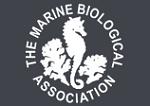APHOTOMARINE
An online educational resource dedicated to the photography of
marine themes, marinelife, life on the seashore and in rockpools
in the coastal waters of south-West England by David Fenwick.

Sifting fine sand
- decide on location 1
Marine sampling
Sifting fine sand
- equipment, bucket, containers and kitchen sieve 1
Marine sampling
Sifting fine sand
- plastic kitchen sieve 1
Marine sampling
Sifting fine sand
- clip lock containers 1
Marine sampling
Sifting fine sand
- sieving sand in pool 1
Marine sampling
Sifting fine sand
- full sieve of sand to sift 1
Marine sampling
Sifting fine sand
- agitating contents sieve 1
Marine sampling
Sifting fine sand
- remaining aggregate 1
Marine sampling
Sifting fine sand
- emptying into container 1
Marine sampling
Sifting fine sand
- sample in container 1
Marine sampling
Sifting fine sand
- filling container with fresh seawater 1
Marine sampling
Sifting fine sand
- filling container with fresh seawater 2
Marine sampling
Sifting fine sand
- stereozoom microscope for examining samples 1
The method above works best where the majority of the sand is finer than the holes in the sieve and where the fauna being looked for is larger. It is always best to wash the sieve after each sample taken. Below examples of types of fauna found on the day the above images were taken.
Marine sampling
Sifting fine sand
- Pontocrates arenarius, an amphipod 1
Marine sampling
Sifting fine sand
- Bodotria scorpioides, a cumacean 1
Marine sampling
Sifting fine sand
- Cumopsis?, a cumacean 1
Marine sampling
Sifting fine sand
- Mangelia costata, a gastropod mollusc 1
Marine sampling
Sifting fine sand
- Donax vittatus, Banded Wedge Shell 1
Marine sampling
Sifting fine sand
- Pseudomystides limbata, a polychaete worm 1
Marine sampling
Sifting fine sand
- Eumida species, a polychaete worm 1
Marine sampling
Sifting fine sand
- a nemertean / ribbon worm 1
Marine sampling
Sifting fine sand
- Echiichthys vipera, Lesser Weever 1
Images above were taken at Albert Pier reef, Penzance Harbour, Penzance, Cornwall, and at the authors home.
Notes for above.
1. The first thing is to deciding where to sample, e.g. in a gulley filled with sand, as both sediment loving and reef loving species could be present.
2. Equipment, plastic kitchen sieve, containers and bucket/s. Plastic kitch sieves are usually available in most supermarkets for about a pound.
3. Method
Sand is collected in the sieve by pulling it towards the body with both hands. Sieve is agitated to remove fine debris and sediment and until clean sand and debris is left behind. The sieve is then inverted over a container of seawater and bottom of sieve poked into the seawater to remove contents. Process may be repeated several times depending on amount of sediment collected by the sieve. The lid is put on the container and fixed either side of a corner, the container is then submerged in seawater with open corner uppermost to completely fill container with seawater, this prevents sloshing during transit and damage to organisms. The container is then placed in a bucket of freshly collected seawater to keep samples cool, this is especially important on warm days.
4. Numerous containers can be filled from different parts of the shore or changes in habitat / seawater depth.
5. Before returning, containers are stacked inside a larger container, which is filled with fresh seawater and clipped shut / sealed, and to keep smaller containers cool in transit.
6. On getting home containers are opened and placed in fridge.
7. Containers are looked at using a stereomicroscope.
8. Worms etc. selected by pipette, cleaned and photographed.
9. Samples returned to the fridge and then to shore the following day or day after. The only exception is with non-native species, which are not returned to the shore.
10. Then starts the process of identification and biological recording.
----------------------------------------
APHOTOMARINE supports open source data recording and sharing for the benefit of wildlife, recorders, research, science and education. The project recommends the following websites and works with the following bodies and organisations.
The Marine Biological Association or MBA, based in Plymouth, is one of the world’s longest-running societies dedicated to promoting research into our oceans and the life they support. Since 1884 the MBA has been providing a unified, clear, independent voice on behalf of the marine biological community.It has a growing membership in over 40 countries.
The National Biodiversity Network or NBN is a charity that supports open source data sharing and recording supporting conservation, science and education. "Why do recorders need open source?". Simply because it supports the core values of wildlife recording and the free use of records and data over a very wide network that includes partners like the Natural History Museum.
The taxonomy used here is based on that of the following database, which is also used by the MBA, NHM and the NBN.
The World Register of Marine Species or WoRMS.

